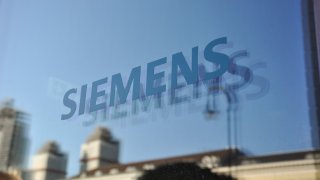
- The German conglomerate reported a 39% rise in adjusted EBITDA (earnings before interest, tax, depreciation and amortization).
- Net income for the period from October to December rose to 1.5 billion euros ($1.81 billion) from 1.1 billion euros for the same period the previous year.
Siemens significantly raised its full-year guidance on Wednesday after a strong fiscal first quarter that saw orders, revenue and net income outstrip market expectations.
The German conglomerate reported a 39% rise in adjusted EBITDA (earnings before interest, tax, depreciation and amortization), while net income for the period from October to December rose to 1.5 billion euros ($1.81 billion) from 1.1 billion euros for the same period the previous year.
Orders jumped 15% with the company citing faster-than-expected recoveries in China and Germany following the Covid-19 downturn. Siemens now expects net income for the full fiscal 2021 of between 5 billion and 5.5 billion euros, with updated guidance projecting growth percentages in the high single digits for the 12 months to September 2021.
The 2.13 billion euro EBITDA for the quarter exceeded consensus forecasts of 1.67 billion compiled by the company and 1.42 billion projected on average by analysts polled by Reuters.
"What we see in Asia, and especially of course in China, is that there is massive demand especially for those industries or for those end-markets which benefit a lot from people staying home, like the gaming industry and the likes," outgoing Siemens CEO Joe Kaeser told CNBC's Annette Weisbach on Wednesday.
Money Report
Kaeser also noted that the Chinese global export model also helped to boost demand for lockdown-friendly industries.
"Think about smart phone gaming and the likes and that is where the biggest demand has been, and those are very modern industries, so they are very automated lines and they need a lot of manufacturing software in the automation, and that is why we have benefited a lot in that area."
However, he suggested that Germany and the rest of the Europe would be more of a "catch up game" than a long-term growth opportunity. Kaeser projected that the U.S. will be the biggest opportunity for the second half of the calendar year and into 2022.






